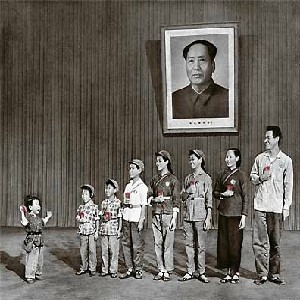Revolutions
Tension between Rich and Poor
The Marquis de Mirabeau, a well–educated nobleman, worried about the migration of French nobles to the cities and the passing of lands into the hands of "new men," wealthy commoners without a sense of paternal obligation toward the peasants on that land.
Beaumarchais’s Understandings of Inequality
Like his predecessors of earlier generations, playwright Pierre–Augustin Caron de Beaumarchais—who became an important figure of the late Enlightenment because of the controversy surrounding his work The Marriage of Figaro [1784]—believed that a truly rational society would not tolerate
A Bread Riot
Bread was the basic staple of most people’s diets, and variations in the price of bread were keenly felt by the poor, especially by women who most frequently bought bread in the marketplace.

People under the Old Regime
This image shows "the people" as a chained and blindfolded man being crushed under the weight of the rich, including both clergy and nobility.
Arthur Young Views the Countryside
Arthur Young, an Englishman, traveled across France on the eve of the Revolution recording his impressions of life there, particularly those aspects that seemed to him to compare unfavorably with his native land.
Poverty in Auvergne
The difficulty of life in rural regions led some to leave home and seek a better life elsewhere, particularly in the growing cities. Such migration worried some observers, who feared villages would be emptied and no one would be left to work the land.
Poverty Observed!: Journal of a Country Priest
Village priests served as community leaders in a variety of respects, including keeping a register of births, marriages, and deaths.
Short Teaching Module: Humor as Resistance
In order to help students think about the dynamics of power in different kinds of societies, this case study attempts to challenge the black-and-white thinking to which students are inclined when thinking about Communism.

Morning Sun
This companion site provides a wonderful introduction to 'the psycho-emotional topography of high-Maoist China.'Short Teaching Module: Women in Romania
Using oral histories, this case study explores various aspects of women’s daily lives in Communist Romania and women’s attitudes toward the changes wrought by the transformation to a pluralist system and to a market economy after the collapse of the regime in December 1989.